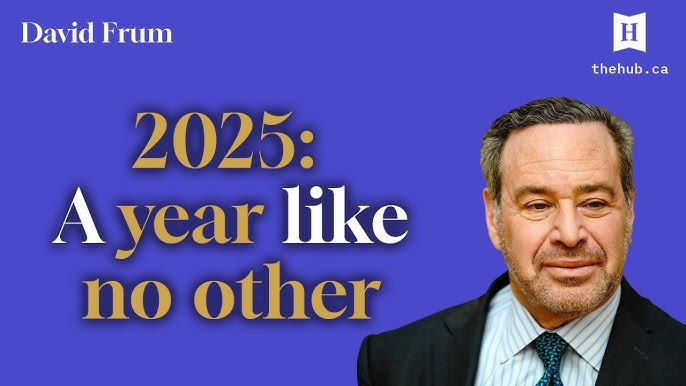
Peter Goodman: The Messy Reality of ‘Made in America’
The construction of a giant factory complex in Arizona was supposed to embody the Trump administration’s ability to bring manufacturing back to the United States.…
Thought Leader: Peter Goodman

The Russo-Ukrainian war has bred an opportunity for stablecoins to be used as a store of illicit value as well as a store of legitimate value for people interested in maintaining savings through crisis. A recent Chainalysis report highlights this trend, finding that the share of stablecoins’ transaction volume on primarily Russian services grew from 42% in January to 67% in March last year after the invasion and has continued to increase since. However, taking into account illicit uses of stablecoins and blockchain-based currencies, we also note the demand for robust financial systems that can operate during times of geopolitical stress, sanctions and high throughput. These issues have also incentivized governments to speed up their exploration of central bank digital currencies (CBDCs) that can increase efficiency, decrease transaction costs and speed up settlement times. But the continued and future operation of CBDC and stablecoin networks — which will be integral to the financial system of tomorrow — will require the expansion of resilient and secure cloud-based infrastructures, no matter whether the architecture is centralized or based on a distributed ledger template.
Since their inception, stablecoins have provided a method of storing value for those who face economic uncertainty and geopolitical instability with their native currency. Although stablecoin traders and holders are active in regions across the globe, 98% of stablecoins are denominated in U.S. dollars. Data from The Block even shows that the supply of fiat-backed, crypto-backed and algorithmic stablecoins totals more than US$97 billion as of January this year, up from US$85 billion from a year ago despite the shrinking of the rest of the cryptocurrency market over the same time. We can understand that the demand for stablecoins is growing, and with that grows momentum following the U.S. dollar. Although this share of stablecoins still falls far short of the total number of U.S. dollars in circulation (US$2.3 trillion, as of the last week in January 2023), it is an important trend to note for financial policymakers.
The U.S. dollar has long been the currency of choice for transactions in cross-border trade settlements, foreign reserve holdings, and foreign-currency debt instruments. As a result of this incumbent status, it has become one of the most stable currencies in global financial markets, and more importantly, the most trusted currency by governments and institutions around the world. However, the state of the global economy has pushed institutions to look for investment diversification, driving the demand for U.S. dollar-pegged stablecoins, which provide attractive alternatives to traditional financial products. While there have been discussions about the potential of the U.S. dollar being unseated as the world’s currency of choice, it does not seem likely in the near term. Considering its current strength and positioning for crypto markets, the U.S. dollar will continue to be the preferred peg currency for stablecoins.
In an October 2022 report released by the Monetary Authority of Singapore (MAS), three important points regarding the current state of cross-border payments were noted: (1) they are slow, costly, opaque and inefficient, relying on an archaic network of correspondent banks, (2) the global average cost for sending remittances is a whopping 6.4% of the transfer value, and (3) the high cost of remittances “is particularly painful for the migrant worker who wants to send money home or the small business which wishes to reach overseas markets through e-commerce.”
The Singapore report goes on to recommend several solutions to this problem of cost and speed inefficiency, proposing that this challenge can be solved through the “linkage of faster payment systems, the construction of a multi-CBDC common platform, and/or the expansion of private sector blockchain-based payments networks.” These themes get to the heart of the issue, which is a need for modern citizens to have access to cheaper and faster methods of settlement. Stablecoins and CBDCs can provide part of the solution for this challenge.
The trend of increased interest in CBDCs globally shows the desire of government and private entities to launch their financial systems full-scale into the 21st century with digital currencies. According to the Atlantic Council, 114 countries, representing over 95% of global GDP, are currently exploring a CBDC, compared to only 35 countries back in May 2020. A new high of 60 countries are also now in an advanced phase of exploration — meaning they already have government-backed digital currencies in development, being pilot tested, or at launch stage.
There is a growing demand from businesses, consumers and governments to reduce their reliance on a single currency or economy for their own state’s economic stability. Resulting from this will evolve a “basket of currencies” approach in global finance that will include interactions between stablecoins, CBDCs, cryptocurrencies and fiat currencies. While some may read news about CBDCs and think that this economic future is far off, global data shows us clearly that this is not the case, as 18 out of 20 G20 countries are already now in the advanced stage of CBDC development, with China’s state-backed digital currency, the e-CNY, already reaching 260 million people.
But there is still much that needs to happen if there is to be widespread adoption of CBDCs around the world, and some leading thinkers on the topic believe its main uses will mostly be only among wholesalers, merchants and government entities. U.S. Senator Cynthia Lummis (R-WY), who has played a significant role in crypto regulation, believes that the more likely direct-to-consumer digital financial product will actually be stablecoins.
U.S. Federal Reserve Vice Chair Michael Barr recently made several notable comments about the need for “working with other regulatory agencies” on a framework for stablecoins, which could “grow into money substitutes and become a viable means to pay for transactions.” Simultaneously, there have been several related regulatory conversations about the cautionary tales of algorithmic stablecoins UST (Terra) and AUSD (Acala Dollar). One of the proposals currently in circulation in the U.S. House of Representatives is a ban of endogenously collateralized stablecoins over the next two years. Beyond this, it is also important to recognize the recent release of a National Institute of Standards and Technology (NIST) report on the security, trust and viability of stablecoin architectures, which will certainly frame policymaker definitions and views of the subject.
As conversations like these proceed, it is important to recognize that continued U.S. financial and economic primacy depends on innovation and attention to new methods of engaging with international markets. The incumbent position of the dollar and its central role in stablecoin (as well as decentralized finance) markets could prove to be an integral part of the U.S. strategy for global financial competitiveness in the years to come. Developing a resilient, transparency-focused and cloud-based infrastructure for a U.S. CBDC — the digital dollar — will only serve to reinforce U.S. competitiveness and the nation’s commitment to responsible innovation.
Peter Goodman: The Messy Reality of ‘Made in America’
The construction of a giant factory complex in Arizona was supposed to embody the Trump administration’s ability to bring manufacturing back to the United States.…
Thought Leader: Peter Goodman
Peter Zeihan: The Death of the US Tech Sector
We’re doing a two-part series on the tech sector. Today, we’ll be looking at the disruption caused by deglobalization and Trump’s policies. The gadgets and…
Thought Leader: Peter Zeihan
David Frum breaks down 2025’s defining moments
Leading author, journalist, and thinker David Frum and The Hub’s editor-at-large Sean Speer reflect on the most significant political developments of 2025. They discuss a…
Thought Leader: David Frum

